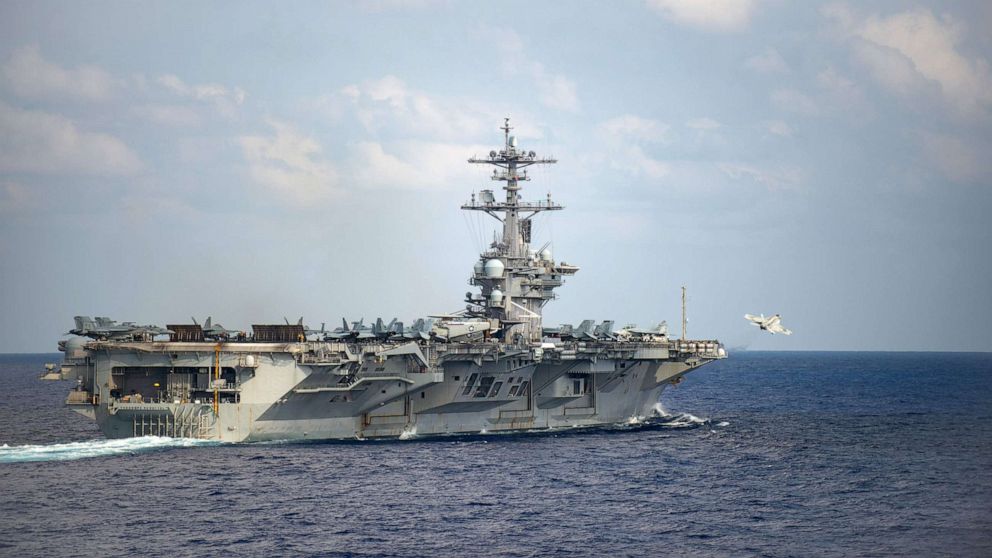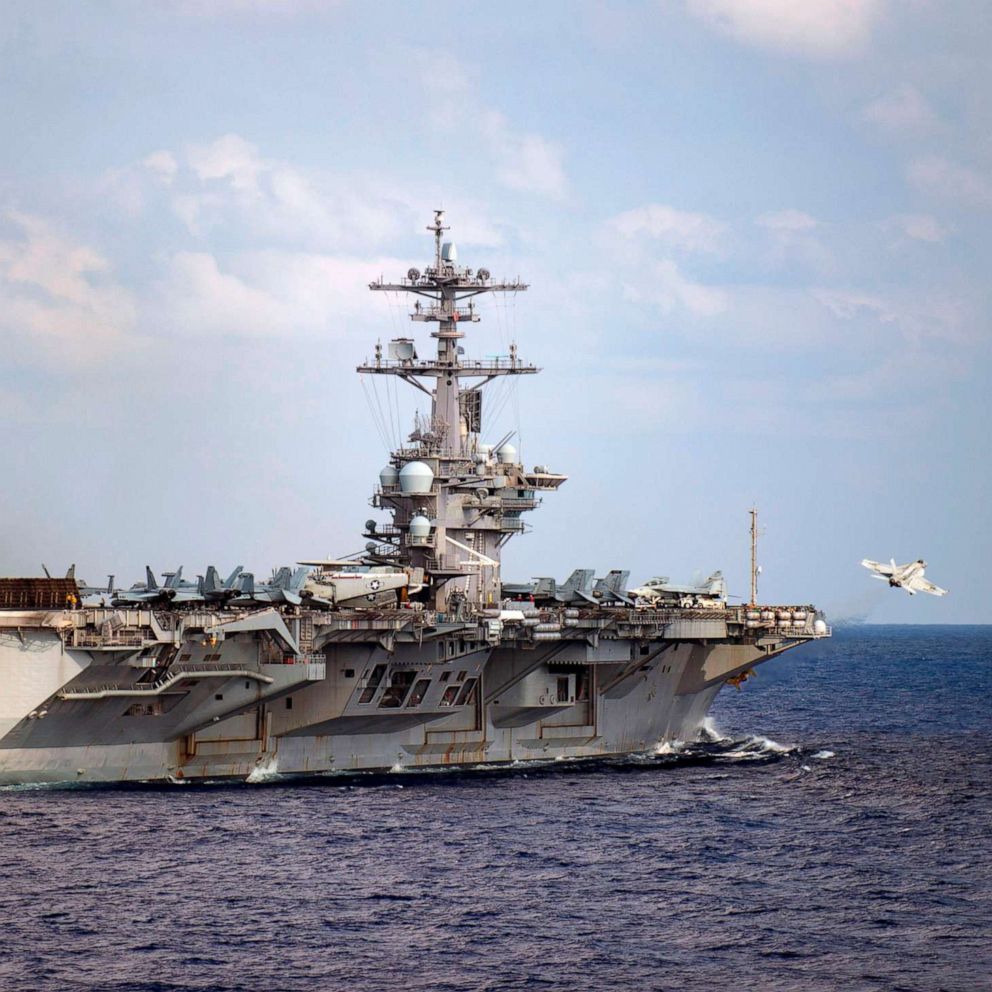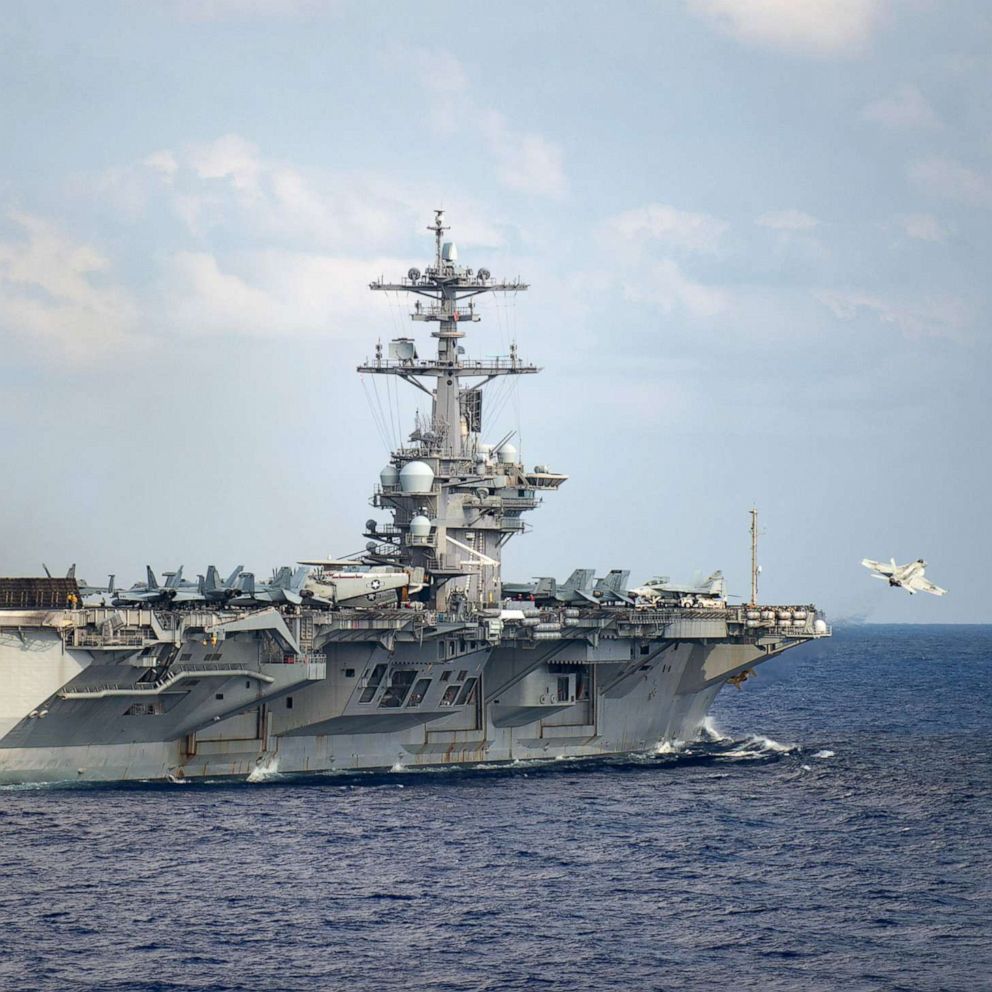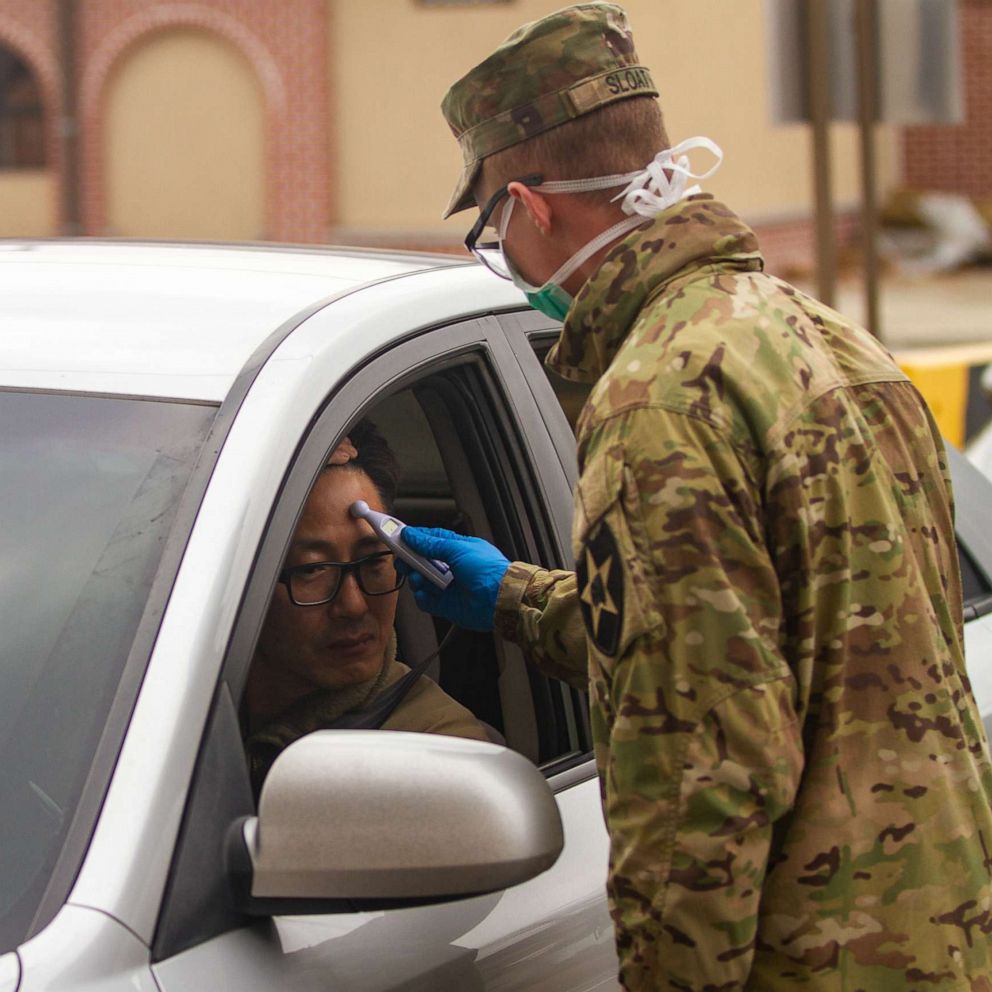Navy will remove 2,700 sailors from aircraft carrier hit by coronavirus
The Navy secretary also said that the ship's captain would not face retaliation for a blunt letter he sent asking that the process of removing sailors from the ship be sped up for their safety.
In a letter to top Navy officials from Capt. Brett Crozier, he asked that most of his ship's crew be taken off the carrier to stem the spread of the virus to the nearly 5,000 sailors on the Roosevelt. Crozier also asked that the sailors be moved from communal facilities on Guam to individual housing to conform with coronavirus safety guidelines established by the Centers for Disease Control and Prevention (CDC).

Crozier's letter created a firestorm of controversy after it was leaked to the San Francisco Chronicle.
Tune into ABC at 1 p.m. ET and ABC News Live at 4 p.m. ET every weekday for special coverage of the novel coronavirus with the full ABC News team, including the latest news, context and analysis.
"We're providing the commanding officer what he has requested and we are doing our best to accelerate the pace wherever we can," Modly said at a Pentagon news conference on Wednesday. "We're in agreement with the CO that we need to do all we can to get as many people off the ship, while still maintaining the safe operation of the ship."
So far, 1,000 of the ship's sailors are already ashore and that number will increase to 2,700 in the coming days, Modly said.
Adm. Mike Gilday, the chief of naval operations, said that about 1,000 members of the ship's crew would remain aboard to run the ship's nuclear reactor and maintain operations needed to ensure the safety of the weapons stored aboard.
Modly emphasized that if the ship needs to head to sea for an emergency it still can do so, another reason why not all of the ship's crew will be moved to land.
Testing of the ship's crew continues as the carrier is berthed in Guam with 1,273 sailors having been tested for the coronavirus. So far, 593 tests have come back negative while the remainder are still being processed.
The Navy is working with the government of Guam to possibly use empty hotel rooms as suitable housing space that meets the CDC's guidelines.
"Hotels are actually a pretty good, pretty good place to put people, particularly if they stay where they're supposed to be for the for the quarantine period. And for the isolation period," said Modly.
Modly and Gilday each said Crozier was doing what he was supposed to be doing in sending the letter to his chain of command.
"The fact that he wrote the letter of this to a chain of command to express his concerns would absolutely not result in any type of retaliation," said Modly. "What we want our commanding officers to be able to do."
Modly said that the medical team aboard the ship had also expressed concerns that there was not enough space aboard the ship to ensure proper social distancing.
"We need a lot of transparency in this process and we want the information to flow up through the chain of command," said Modly. "And that's, that's what they did. And we appreciate their ability to let us know."
However, Modly held out the possibility that Crozier might face disciplinary action if it turns out he was the one who leaked the letter.
"I don't know who leaked the letter to the media. That would be something that would violate the principles of good order and discipline, if he were responsible for that. But I don't know that," said Modly.
Gilday said it appeared there was "a communications breakdown" between the ship's commanders and higher commands that could explain why Crozier felt he had to write his letter to request what was already planned to be sped up.
The Roosevelt is the only one of the Navy’s 94 ships currently at sea that has COVID-19 infections. All other cases among Navy ships involve vessels that are homeported and not deployed.
What to know about coronavirus:
- How it started and how to protect yourself: coronavirus explained
- What to do if you have symptoms: coronavirus symptoms
- Tracking the spread in the US and Worldwide: coronavirus map






